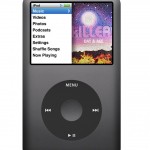The history of podcasting (GUEST BLOG)
by Dan Kearns | February 16, 2016
In 2004, the word “Podcast” appeared for the first time in history. Think about that for a second – the word “Podcast” isn’t even a teenager yet. The official definition is, “Podcasts offer in-depth reporting that is often informative and inspiring.”
In 2001, Steve Jobs announced the original iPod. By 2004, a genre of narrative audio that took the iPod’s coined name “podcasting” became a thriving mini-industry. Overnight it seemed, there were podcasts being launched about politics, sports, literature, comedy, and much more. According to USA Today, Apple has already surpassed 1 billion subscriptions for podcasts via iTunes.
Podcasting remains a niche medium compared with the mass reach of radio and television. Approximately 39 million Americans (15% of the over-12 population) listened to a podcast in the past month, up from 9% in 2008.
But with people flocking to streaming and on-demand services such as Netflix, Spotify and the new soundBYTE App, and mobile devices allowing them to access content on the go, advocates say podcasts are poised to capture more listeners and, with them, a bigger slice of the growing digital advertising pie. “There’s a huge amount of audio consumption that is happening already [on the radio],” said Matt Lieber, co-founder of Gimlet Media. “When you put a smartphone in every pocket, we think it’s inevitable that listening will shift from AM/FM broadcasts to digital. [The audience] is going to shift from 40 million to 240 million,” he says, referring to weekly U.S. radio listenership.
Making podcasts has gone from something many people did in their basements in their free time to an industry that’s creating polished, acclaimed audio content that are starting to pull in serious money from investors and advertisers. My gosh, just take a look at Rivet Radio!
Shannon Bond, podcasting expert, opines that the latest surge in interest for podcasts, which have been in existence for over a decade now, is due to the fact that:
- It’s gotten quite a bit easier to download or even stream a podcast. With the rise of mobile devices, Apple put its podcasting app right there in the latest operating system.
- There are better Wi-Fi networks, connected cars (we’re seeing dashboard entertainment systems that have apps built-in), and people in general are consuming more streaming media.
- People want to get things on the go. They want to listen and watch things on-demand (when and where they choose to), and they want to do it while they’re doing other things – they’re commuting, they’re doing errands – and podcasts are a particularly good way to keep up with the news (Rivet Radio, anyone?) or to have an entertainment show while doing something else along the way.
- In the United States, about 40 million people have listened to a podcast in October 2014. You’re starting to see some breakout programs that are getting really big audiences – a million downloads per week. They’re generating a lot of attention. There’s a show called Serial that’s generating attention not only in the U.S., but also the U.K., Australia, and Germany, and it has a huge following on social media.
- There’s a lot of radio programming that’s now available to download on the go so that you don’t have to worry about being tuned into your radio at the time the show airs. There’s a radio audience in the U.S. of about 240 million people who are listening every week, and we’re going to start to see some of that audience shift over [to podcast products], so you could see quite a lot of growth.
- You’re seeing advertisers who are really interested in reaching the podcast audience. On one hand, they’re young, they tend to be affluent, they’re often tech-savvy first adopters, and that can be really attractive [to advertisers] especially if you’re some sort of digital company.
- They also talk about engagement and intimacy. People are speaking right into your ears; we tend to form an attachment to the hosts when listening to podcasts. It feels like you’re sort of listening in on a conversation, and so advertisers see that as being quite valuable because people come back week after week to listen to the content, and as a result, hear their advertising messages.
Ms. Bond thinks as you see more and more people doing this streaming and on-the-go media, there will be a much large audience. “I also think the technology will improve. You could potentially have applications where you could share podcasts. It moves away from being a solitary experience. It could be almost like an Instagram where you can share bits of audio with your friends on other social platforms, and that might be something that would really accelerate listenership.” By the way, that’s exxxactly what soundBYTE App does!
##
Dan Kearns is the founder of soundBYTE App, a new micro-sharing audio app. Based in Chicago, soundBYTE App has quickly worked its way from concept to product, and it is already becoming known as the “Audio Twitter” of the social media world. Be one of the first to join the soundBYTE App community today on the App Store: http://bit.ly/SBblog16.

